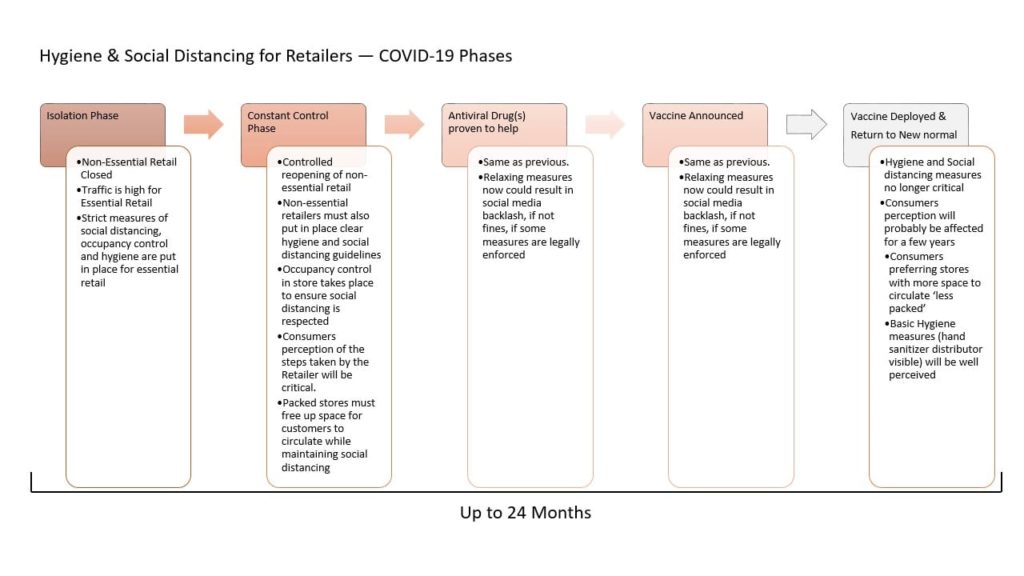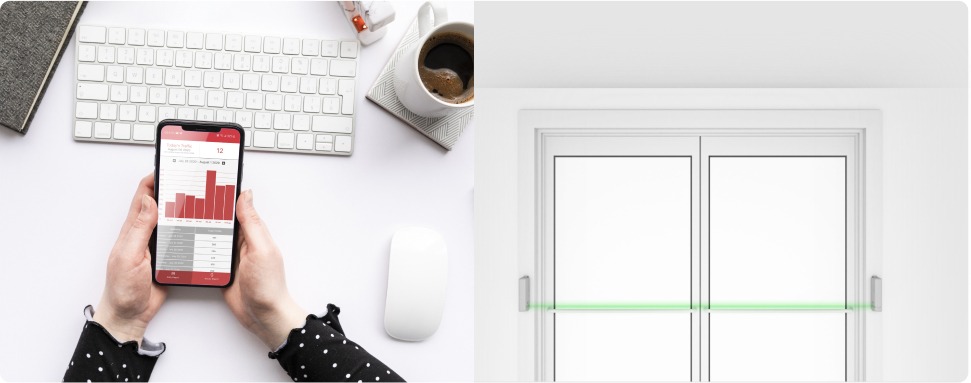Our clients, at Storetraffic—as well as ourselves—are wondering when things will be going back to normal. What does the future hold for the economy and the retail market? What will this “new normal” be?
I have no definite answer—nobody does at this point. What seems clear is that we won’t be going back to “normal” soon. Things will unfold as phases. These varying stages will be determined in large part by governmental health authorities and influenced by economic considerations. Consumers’ shopping behaviors and buying habits will align with these phases.
The COVID-19 has impacted retailers’ confidence in the economy for some time. Even if every store were to reopen tomorrow, we’d experience a gradual, rather than a rapid recovery.
It’s hard to think of an event that has garnered more media coverage internationally than the COVID-19 pandemic; perfectly reasonable under the circumstances. Everyone, everywhere, is aware they have a role to play to control the spread of the coronavirus. Social distancing/Physical distancing and proper hygiene measures are crucial.
When authorities manage to flatten the curve successfully, and once we get access to solutions to properly treat patients, non-essential services retailers will be authorized to reopen, gradually, and with strict guidelines. However, this does not mean that consumers will flock to stores, or that things will be back to normal.
The return to “open for business” will occur in five phases:

Consumers’ confidence will echo what they read, hear, and see on the news. Authorities will continue to deliver clear-cut indications: we will all need to be cautious and abide by hygiene and social distancing guidelines. As retail consumers, we will need to double-down on safety measures, to avoid a second wave of COVID-19 cases—which would take us back to the current situation, or even worse. People will be shopping for what they need, only. Time spent “shopping and browsing” will be kept to a minimum. That being said, customers will probably enjoy going out, and there will be traffic in stores—buying traffic. If they do the right thing, retailers will see higher than usual conversion rates. Consumers, especially if they have to wait to enter a store, will be much more likely to come out having made a purchase. If they don’t, they’ll have associated the experience to something “painful,” with no reward at the end. Retailers will need to make sure to seize these opportunities.
The impact on in-store traffic and conversion rate will progress as the effects of the virus wane:

As a retailer, you will be obligated to provide a safe shopping environment. Failure to do so could expose you to significant fines, perhaps even worse, to serious social media backlash. Consumers will spend their money carefully. Earning their trust will require applying the following measures:
Store displays that allow customers to circulate easily—retail spaces with displays packed too tightly will potentially look and feel unsafe.
Hygiene measures will be greatly appreciated, scoring you major points. Consumers will expect to see store personnel controlling the flow of people at the entrance and explaining hygiene guidelines. We may even experience measures like wearing a mask to shop, or even having to take consumers’ temperature. Consumers will expect stores to enforce these measures responsibly. Proper training of associates having to interact with consumers will also be needed.
Monitoring and enforcing limits on occupancy density will continue for some time. Consumers will expect that the in-store people count will allow them to shop in an environment that fosters Social distancing/Physical distancing policies, rather than challenges them.
Hygiene measures, such as plexiglass to protect staff and consumers at the cash wrap, will be appreciated. Clear cleaning policy and staff hygiene policy will also be expected. An employee with ANY sign of sickness will need to be sent home. Some retailers will also consider appointment-based systems to control traffic flow if their average sales numbers allow them to do so. Consumers will be on edge. They will report corporations that don’t appear to take the fight seriously. As such, social media backlash could be worse than any governmental law or measure being enforced.
It will take many months, after the initially controlled reopening of stores, before consumers begin to feel comfortable again in retail spaces.

Once anti-viral drugs reduce the number of critical cases and deaths from the virus, the level of fear will taper off. Authorities could offer some respite, relaxing guidelines. Yet, measures will still need to be enforced to control the rate of infection and lessen the strain on the healthcare system. Consumers will feel a little better. They’ll start going out and do a bit more shopping. At this point, specialty retailers will see a drop in conversion rate, but an increase in traffic. Those who are ready, well-stocked, and well-staffed will benefit.
The phase when a vaccine is found may provide additional fear relief; we may see another up-tick in traffic and consumer confidence when large-scale vaccination plans are put in place. Still, physical distancing measures will be applied, and retailers will need to be careful. This nightmare of sorts will be coming to an end, however, and consumers will be more willing to spend. Traffic should increase, conversion rate should drop, but social distancing/physical distancing and occupancy monitoring will still be in place.
“When people are vaccinated, finally, things will be back to normal!” Not just yet. That’s when we’ll be genuinely facing the “new normal.” Some retailers will not have survived. Even the Amazons of this world could end up on the losing side, as their current policy of focusing on essential products is leaving their non-essential sellers in big trouble, and forced to adapt on their own. Will they be forgiven?
E-commerce and delivery services will grow, but they should also experience a sort of return to normal—a new normal. E-Commerce will have won more market share. The crisis will accelerate the trend. Brick-and-mortar retailers will most definitely still exist and prosper. But more than ever, the experience factor will be the powerful differentiator.
Let us know what you think in the comments below. Until next time, stay safe… and spread some love around you!












